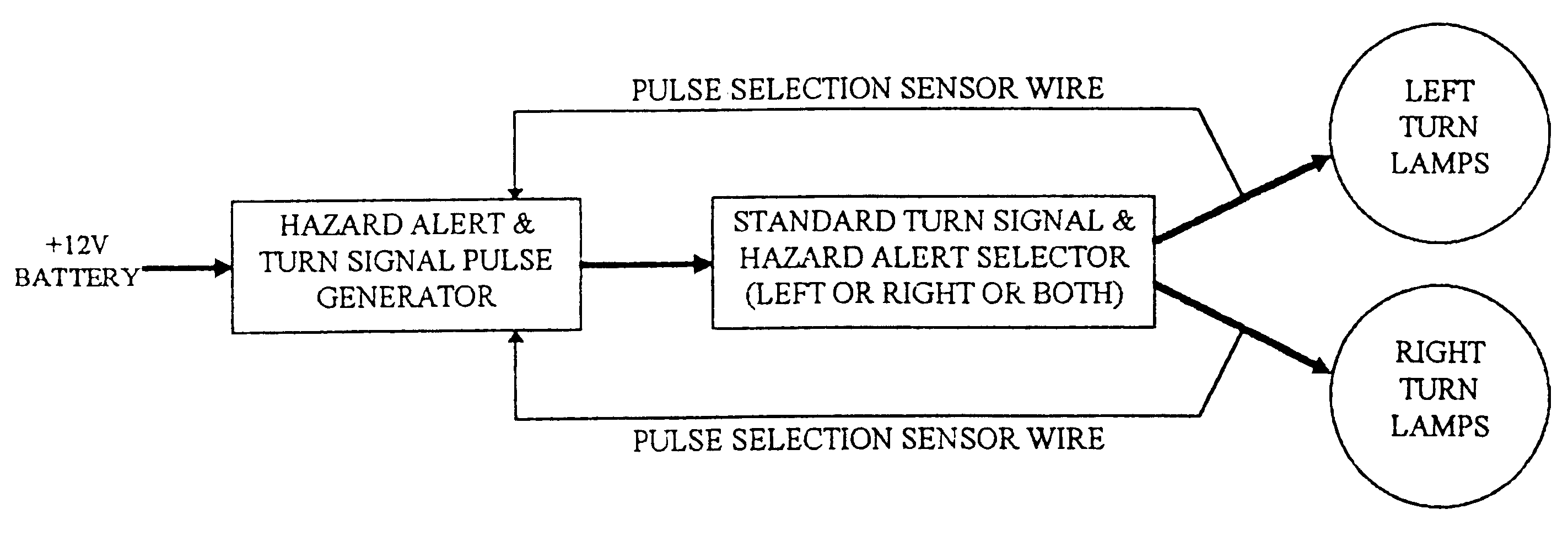Distinctive hazard flash patterns for motor vehicles and for portable emergency warning devices with pulse generators to produce such patterns
a technology of flashing patterns and motor vehicles, which is applied in vehicle lighting systems, transportation and packaging, lighting and heating equipment, etc., can solve the problem that drivers are often not as quickly aware of hazards
- Summary
- Abstract
- Description
- Claims
- Application Information
AI Technical Summary
Benefits of technology
Problems solved by technology
Method used
Image
Examples
Embodiment Construction
The hazard alert flasher described generates hazard warning flasher rates and patterns for highway vehicles and for highway emergency electric lanterns. A specific and unique flash pattern is intended to alert other motorists, at first sight, that they are seeing a hazard warning and not a turn signal. After numerous trials a signal consisting of three very short flashes followed by a pause has been selected for the automotive hazard alert flasher prototype.
The flash rate of the automotive prototype is designed to comply with the requirements of federal and stale laws and regulations. The standard adopted by the authorities is that of the Society of Automotive Engineers (SAE). SAE J945 provides that the hazard flash rate shall be 60 to 120 flashes per minute and the percent on time shall be 30% to 75%. The flash rate of the automotive prototype as programmed is 120 flashes per minute and 32% on time.
The flash rate and pattern used in the automotive prototype has been judged by the i...
PUM
 Login to View More
Login to View More Abstract
Description
Claims
Application Information
 Login to View More
Login to View More - R&D
- Intellectual Property
- Life Sciences
- Materials
- Tech Scout
- Unparalleled Data Quality
- Higher Quality Content
- 60% Fewer Hallucinations
Browse by: Latest US Patents, China's latest patents, Technical Efficacy Thesaurus, Application Domain, Technology Topic, Popular Technical Reports.
© 2025 PatSnap. All rights reserved.Legal|Privacy policy|Modern Slavery Act Transparency Statement|Sitemap|About US| Contact US: help@patsnap.com



